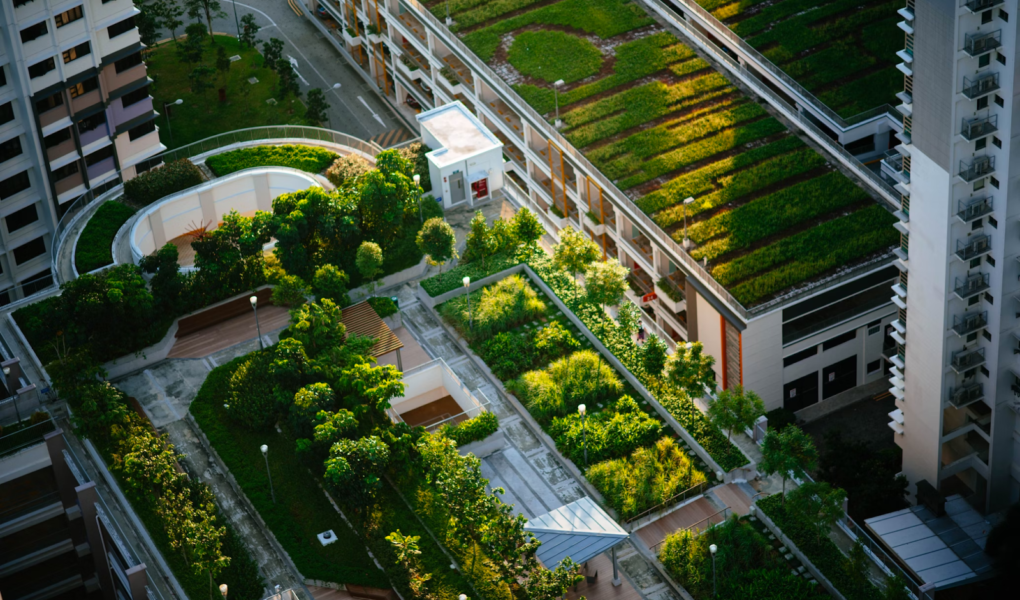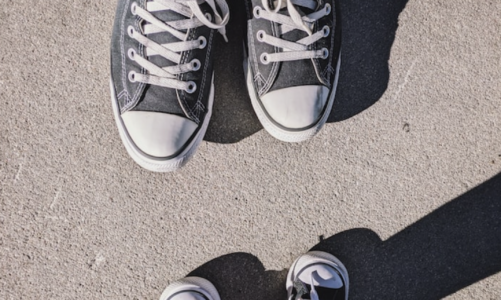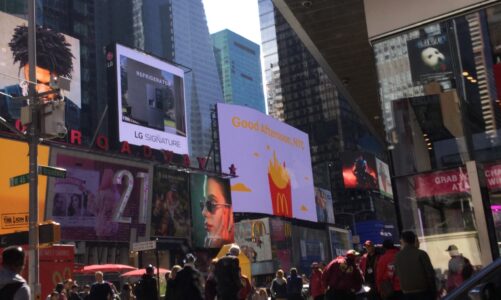When people think about modern cities throughout the world, they often remind themselves of the large amounts of gray that permeate many urban environments. Gray roads, gray sidewalks, gray buildings, and gray roofs have become ubiquitous to large cities throughout the United States.
But what if there was a way to replace some of this gray with green? What if city dwellers could beautify urban areas by planting gardens throughout the roofs of buildings? What if these green urban gardens could also be used to make cities safer, healthier, more resilient, and more productive?
To accomplish these goals, more green roofs should be built on the rooftops of urban buildings. Green roofs are urban gardens consisting of a waterproof membrane, a growing medium (i.e., soil), and a large amount of vegetation that all lie on top of a building’s roof. In addition to making cities greener and prettier, green roofs have plenty of economic, environmental, and health-related benefits. For example, green roofs can be used to filter water pollutants, mitigate urban flooding, reduce citywide temperatures, and improve air quality.
Clean Air and Clean Water
Pollution is a major problem faced by virtually every urban community in the world. The dense agglomeration of buildings and dwellings makes both the air and water in an urban environment vulnerable to serious contamination.
Most anthropogenic urban air pollution originates from fossil fuel combustion processes used to power homes, buildings, and vehicles. These combustion processes release pollutants such as nitrogen oxides and particulate matter, which can damage people’s nervous, endocrine, and respiratory systems. In some cases, air pollution can be fatal, as about 100,000 Americans and 4.2 million people worldwide die from health conditions linked to air pollution each year.
Fortunately, green roofs can improve urban air quality, which would make city dwellers healthier and stop many preventable deaths from occurring. The vegetation that grows on green roofs can absorb nitrogen oxides and reduce the atmospheric concentrations of these toxic air pollutants. In terms of the amounts of air pollutants removed, experts estimate that installing a green roof on every building with a roof area of more than 900 square meters in Washington, D.C. is equivalent to planting roughly 30,000 trees.
The pollution of drinking water supplies is also a common problem in urban areas. Homes, buildings, vehicles, and industrial facilities are all sources of pollution that can contaminate drinking water in urban areas. Bacteria in municipal or industrial solid waste can cause waterborne illnesses like cholera and legionnaires’ diseases. Clay, gravel, and other soil or rock particles can alter the taste and degrade the quality of drinking water. Heavy metals like lead can cause organ damage and possibly death.
However, green roofs can protect drinking quality from contamination. Studies have shown that green roofs significantly reduce the total concentration of suspended solids in drinking water. Green roofs filter suspended solid particles made of bacteria, soil particles, organic matter, grains of rock, and heavy metals from rainwater before the water infiltrates underground aquifers. Green roofs also substantially reduce the concentrations of nitrates, ammonia, phosphorus, and other chemical substances that can degrade water quality. This filtration preserves the quality of groundwater that is often used as a source of drinking water in urban areas.
Flood Mitigation
Urbanization in many parts of the world has made communities more vulnerable to devastating floods. Porous soils have been replaced with impermeable layers of concrete that make up the roads, streets, sidewalks, and plazas in urban areas. To make matters worse, climate change and global warming have made many cities throughout the planet more vulnerable to hurricanes and other natural disasters that can lead to severe flooding. Traditional stormwater drainage systems are often ill-equipped to handle flash floods and storm surges that can cause roads to be blogged and buildings to be worn down.
Fortunately, green roofs are a viable solution when it comes to minimizing the damage of severe flooding events. Studies have shown that green roofs can absorb up to 70 percent of all stormwater runoff that flows through a city. Green roofs that are irrigated more frequently tend to soak up a higher percentage of runoff. By absorbing stormwater runoff, green roofs can reduce the severity of flood events and mitigate the amount of damage caused by these otherwise devastating natural disasters.
A Cooler Environment
The growth of cities throughout the world has produced a recurring trend of distinctively high temperatures commonly known as the “urban heat island effect.” The low albedo, or high absorptivity, of the concrete that lines up urban streets can cause a city with about 1 million residents to be 1–3 degrees Celsius hotter than the surrounding suburban and rural areas on a sunny day. While this may not sound like a big temperature difference, it can significantly increase the heat mortality risks of city dwellers on a very hot day with an air temperature of about 30 degrees Celsius.
Green roofs can reduce the urban heat island effect by keeping city temperatures relatively low. Green roofs have high albedos of 0.7 to 0.85, allowing them to reflect higher proportions of incoming light than traditional gravel, tar, or bitumen roofs, which have much lower albedos of 0.1 to 0.2. This prevents green roofs from heating up to the same extent as traditional roofs, enabling green roofs to reduce overall citywide temperatures. By reducing temperatures in big cities, green roofs also decrease the costs of the energy required for urban air conditioning.
More Costs for Households and Businesses?
One common criticism of green roofs is that they impose additional costs on households and businesses. Green roofs are more expensive to install than conventional roofs. Extensive green roofs, which have a thinner medium 2–6 inches deep, increase roof installation costs by $10–24 per square foot of roofing. Intensive green roofs, which have a thicker medium 6–18 inches deep, increasing roof installation costs by twice as much.
Green roofs are also more expensive to maintain than conventional roofs. The roots of rooftop plants may grow big enough to penetrate a green roof’s waterproof membrane, which damages the roof and causes it to leak water. These leaks can be quite expensive to seal, making it costly to maintain green roofs.
Critics of green roofs fear that the push to install green roofs would only lead to higher costs for households and businesses. For example, in 2017, the city of Denver, Colorado, passed an initiative requiring new or renovated buildings to install green roofs. Most landowners in Denver were unable to afford the costs of installing and maintaining green roofs, causing real estate development in the city to stall. Housing and real estate may become scarcer and more expensive in a city whose residents are already struggling with high costs of living.
To avoid the increase in living and business costs associated with green roof requirements, it may be best to encourage real estate owners to install green roofs voluntarily.
Green roofs may herald a new generation of sustainable urban design given their aesthetic and practical benefits. Cities can make their environments cleaner and healthier by encouraging more property owners to install green roofs on top of their buildings. Green roofs can also make cities more resilient to weather- and climate-related events such as flash floods, storm surges, and heat waves by absorbing stormwater runoff and reducing citywide temperatures.




